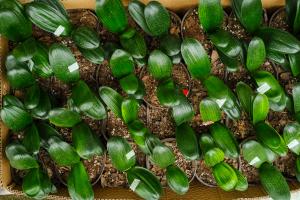Introduction
Bamboo plants are a beautiful addition to any living space, adding a touch of nature and tranquility to your surroundings. However, keeping your bamboo plant healthy and thriving requires proper care and attention. One of the most important aspects of caring for a bamboo plant is determining how often to water it. In this article, we will discuss the factors that influence how often to water your bamboo plant, as well as some tips for proper watering techniques to help your bamboo plant grow and thrive.
Factors that Influence Watering Frequency
The frequency with which you need to water your bamboo plant will depend on various factors such as the type of bamboo, the size of the pot, the amount of sunlight it receives, and the humidity levels in its environment.
Type of Bamboo: Different types of bamboo require different watering regimes. Lucky bamboo, for example, is a type of bamboo that is often grown in water, and therefore requires more frequent watering. Outdoor bamboo, on the other hand, may require less frequent watering depending on the climate and temperature.
Size of the Pot: The size of your bamboo plant pot will also influence how often you need to water it. Smaller pots will dry out faster than larger pots and will, therefore, require more frequent watering.
Amount of Sunlight: Bamboo plants require a good amount of sunlight to thrive. However, too much direct sunlight can cause the soil to dry out quickly and may require more frequent watering. Conversely, if your bamboo plant is located in a spot with reduced sunlight, it may need to be watered less often.
Humidity Levels: Bamboo plants thrive in a humid environment. If the air in your home or office is relatively dry, you may need to mist your bamboo plant with water to increase its hydration levels. This will, in turn, reduce the frequency of watering your bamboo plant will need.
Watering Techniques
When watering your bamboo plant, it is essential to follow proper techniques to ensure that it receives the right amount of water. Here are some tips to keep in mind:
1. Avoid Overwatering: One of the biggest mistakes that people make when caring for bamboo plants is overwatering. Make sure to allow the soil to dry out between watering sessions to avoid waterlogging or root rot. Test the soil with a finger or moisture meter before watering to ensure that it is dry to the touch.
2. Use Filtered Water: Bamboo plants are sensitive to the chemicals found in tap water. To avoid any negative effects on your plant, use filtered water when watering your bamboo plant, especially if it is located in a small container or a vase filled with water.
3. Water Slowly and Gradually: When watering your bamboo plant, it is essential to water slowly and gradually to prevent any water from spilling or running off. Potted bamboo plants can be watered at the base of the plant or from the top, allowing the water to trickle down. Outdoor bamboo plants can be watered using a hose or watering can with a gentle flow to prevent soil erosion.
4. Add Fertilizer: Adding fertilizer to your bamboo plant can help promote its growth and overall health. However, it is crucial to follow the correct dosage recommendations and application instructions to avoid over-fertilizing, which can damage the plant's root system.
Conclusion
In summary, successful bamboo plant care hinges upon proper watering techniques and frequency. Factors that affect watering frequency include the type of bamboo, the size of the pot, the amount of sunlight, and humidity levels. By keeping these factors in mind and following proper watering techniques and tips, you can help your bamboo plant grow and thrive for years to come.

 how many times do yo...
how many times do yo... how many planted tre...
how many planted tre... how many pine trees ...
how many pine trees ... how many pecan trees...
how many pecan trees... how many plants comp...
how many plants comp... how many plants can ...
how many plants can ... how many plants and ...
how many plants and ... how many pepper plan...
how many pepper plan...




























